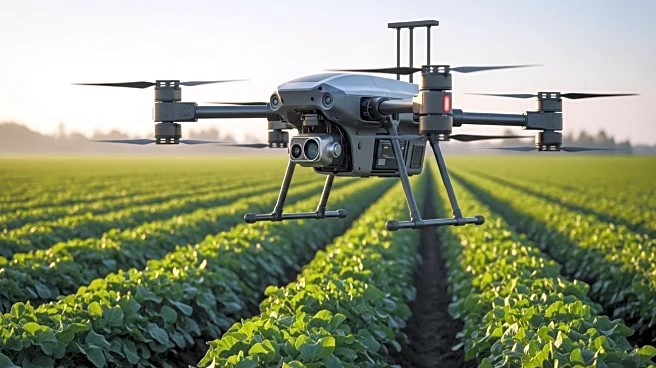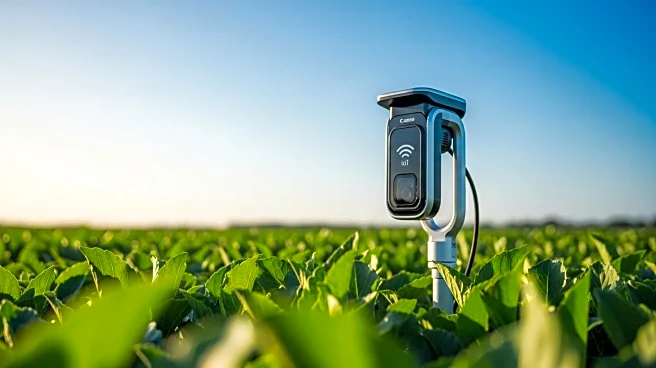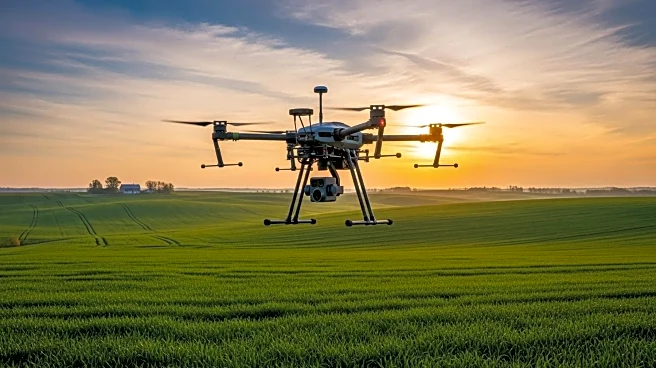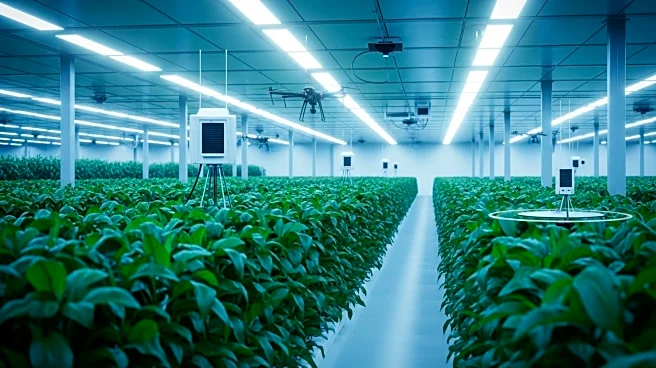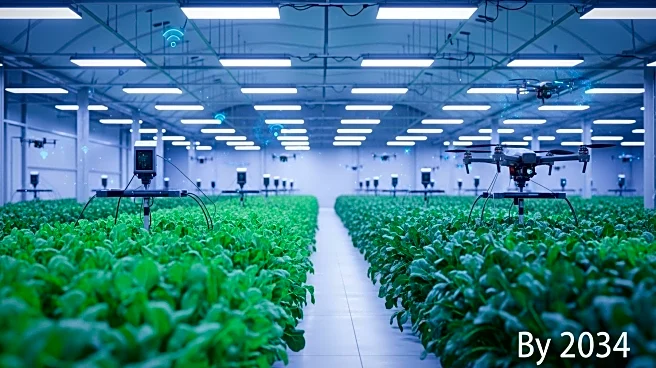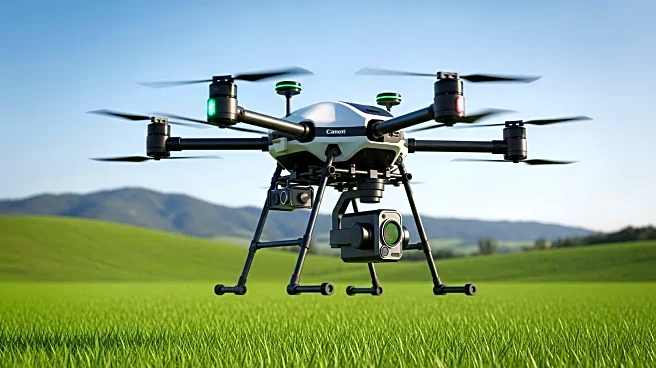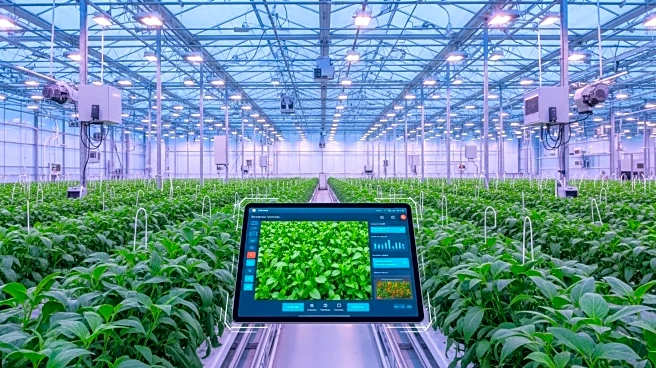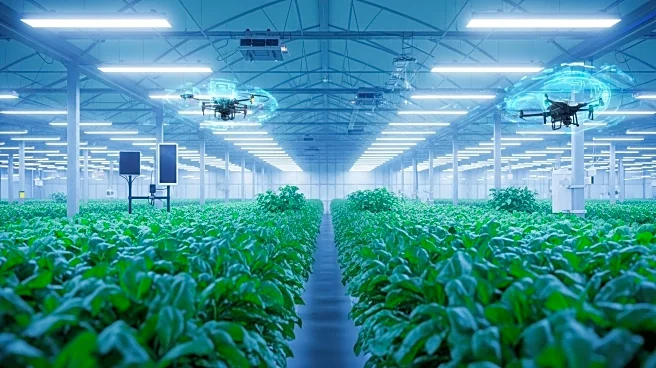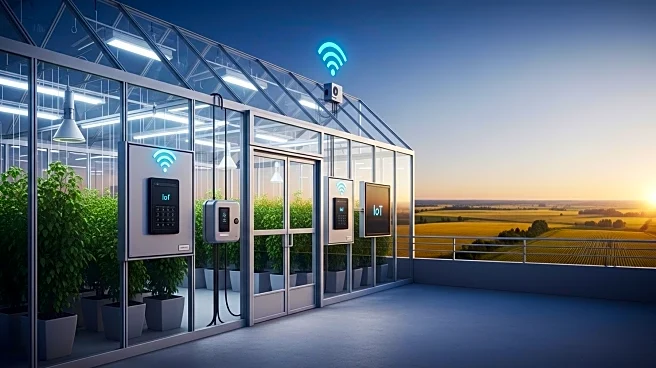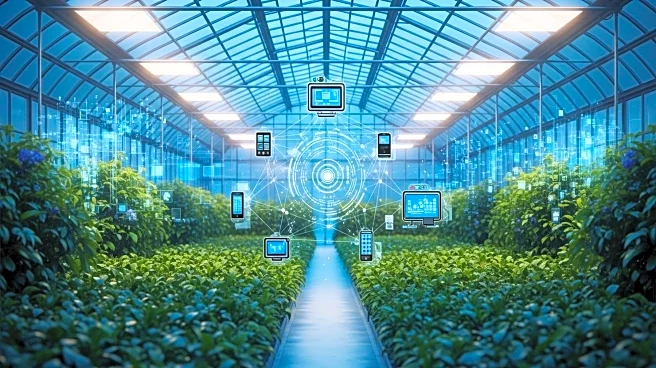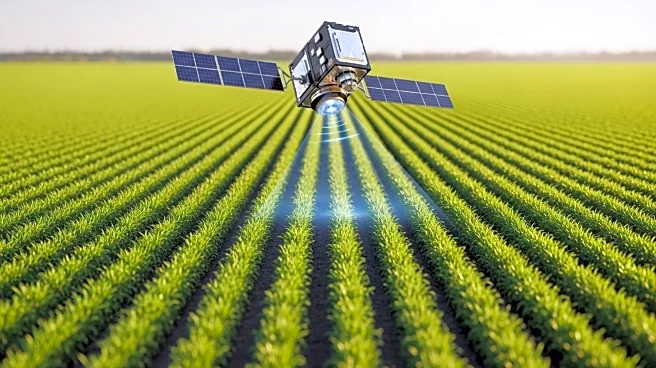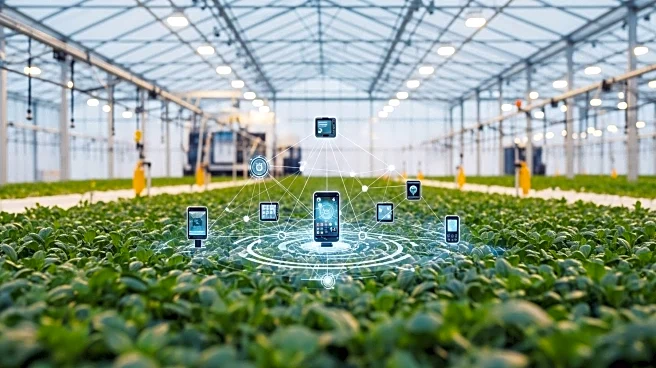What is the story about?
What's Happening?
The global market for generative AI in agriculture is expected to grow significantly, with projections indicating an increase from USD 226.2 million in 2024 to USD 2.15 billion by 2033. This growth is driven by a robust compound annual growth rate (CAGR) of 28.7% starting from 2025. The adoption of generative AI models is empowering farmers to make informed decisions regarding yields, weather impacts, and input requirements, reinforcing precision agriculture principles. The industry is evolving towards AI-driven crop simulations and decision-making tools, with companies like Bayer AG, Microsoft, and Ernst & Young collaborating to launch generative AI systems supported by proprietary agronomic data. These advancements are facilitated by enhanced integration of AI with existing digital agriculture platforms, incorporating satellite imagery, IoT data, and advanced management systems to optimize resource efficiency and support better crop outcomes.
Why It's Important?
The integration of generative AI in agriculture is crucial for modernizing farming practices and improving operational efficiency. By enabling data-driven decision-making, these technologies help mitigate operational risks and optimize resource use, which is vital for sustainable agriculture. The shift towards AI-driven solutions is particularly beneficial for smallholder farmers in emerging regions, offering localized, multilingual advisories that bolster climate resilience. As the market grows, stakeholders in the agriculture sector, including farmers, agribusinesses, and technology providers, stand to gain from improved crop yields, reduced input costs, and enhanced climate adaptability. The collaboration between major companies like Bayer AG and Microsoft highlights the momentum towards intelligent, connected farming solutions, which could transform the agricultural landscape and contribute to global food security.
What's Next?
The continued development and integration of generative AI technologies in agriculture are expected to drive further advancements in precision farming and livestock management. As AI models become more specialized and efficient, the industry will likely see an increase in scalable, frugal solutions designed for underserved agricultural ecosystems. This trend indicates a shift from generalized AI applications to more targeted approaches that address specific challenges faced by farmers. The ongoing collaborations between technology companies and agribusinesses will likely result in new AI-driven tools and platforms that enhance decision-making and operational efficiency. Stakeholders can anticipate further innovations in machine learning, computer vision, and cloud infrastructure, which will play a pivotal role in modernizing agricultural practices and supporting sustainable development goals.
Beyond the Headlines
The rise of generative AI in agriculture also presents ethical and cultural implications, particularly in terms of data privacy and the digital divide. As AI technologies become more prevalent, ensuring equitable access and addressing concerns related to data ownership and privacy will be essential. Additionally, the cultural shift towards technology-driven farming may require adjustments in traditional agricultural practices and community engagement. Long-term, the integration of AI in agriculture could lead to significant shifts in labor dynamics, with potential impacts on employment and skill requirements in the sector. Addressing these challenges will be crucial for ensuring that the benefits of AI-driven agriculture are distributed fairly across different regions and communities.
AI Generated Content
Do you find this article useful?
